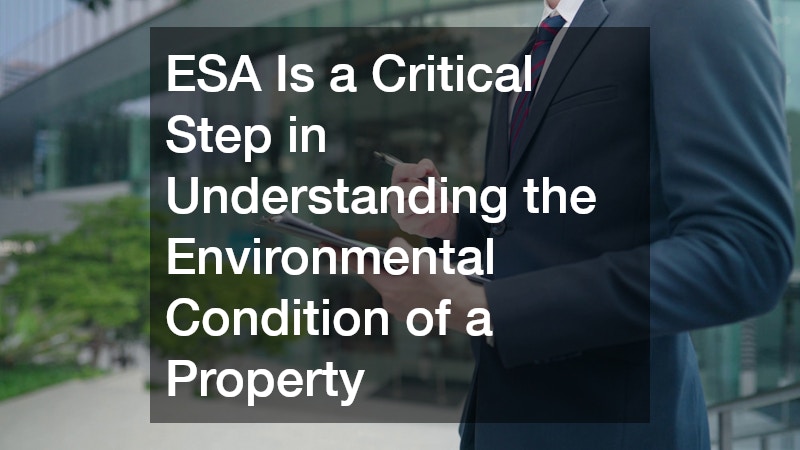Phase I Environmental Site Assessment (ESA) is a critical step in understanding the environmental condition of a property. Its primary purpose is to identify potential or existing environmental liabilities that may impact property transactions. Phase i environmental site esa is essential for property buyers and stakeholders to comprehend, as it can significantly affect investment decisions.
What Does a Phase I ESA Typically Include?
Document Review
One of the key components of a Phase I ESA is reviewing historical documents, which provide insights into the historical usage of the property. These documents often include aerial photographs and fire insurance maps that help identify any past activities which may have resulted in environmental concerns.
Property records and historical maps are scrutinized to gather information about previous ownership and land use. This thorough review can uncover past industrial activities that may have led to contamination.
The document review also includes previous environmental reports and land title records. These documents can reveal past assessments or clean-up activities, which are crucial for understanding the site’s current environmental status.
Site Inspection
The site inspection is an on-the-ground assessment of the property, examining the physical conditions for potential environmental risks. This includes evaluating structures, grounds, and nearby properties for signs of contamination or hazardous materials.
Inspectors look for indicators such as chemical spill residues, asbestos, or lead-based paint. They also assess the proximity of the site to hazardous waste or landfill areas.
Furthermore, soil and water samples may be taken during the inspection to test for contamination. The findings from these analyses contribute valuable data to the Phase I ESA report, aiding in risk assessment processes.
Why is a Phase I ESA Important for Property Transactions?
Risk Assessment
A Phase I ESA is crucial in identifying potential environmental liabilities that could affect a property’s usability and value. By uncovering these risks, buyers can make informed decisions and negotiate accordingly.
Identifying risks early on can prevent unforeseen environmental cleanup costs post-purchase. It provides a layer of protection for buyers against investing in properties with hidden environmental issues.
Moreover, the assessment aids in understanding any mitigation measures that need to be put in place. This foresight is invaluable for planning future developments and ensuring compliance with environmental regulations.
Legal and Financial Implications
Phase I ESAs offer legal protection by documenting environmental conditions, which is essential for liability management. In case of future environmental disputes, the ESA serves as a crucial record of the property’s initial state.
Financially, understanding the environmental liabilities can impact lending decisions. Lenders often require a clean ESA report before approving substantial investments, highlighting the ESA’s significance in financial transactions.
This assessment also influences insurance premiums related to environmental liability. Knowing the potential risks can lead to more accurate insurance coverage and premiums tailored to the property’s specific conditions.
Can a Phase I ESA Affect Property Value?
Impact on Buyers and Sellers
The findings from a Phase I ESA can significantly influence the negotiation dynamics between buyers and sellers. If environmental issues are identified, buyers might seek price reductions to cover anticipated clean-up costs.
On the other hand, sellers with clean ESA reports can leverage this information to justify their asking price. A favorable assessment can enhance buyer confidence, potentially accelerating the sale process.
Real estate agents often use Phase I ESA outcomes to adjust marketing strategies. A property with no significant environmental issues can be more appealing, resulting in quicker transactions and satisfied clients.
Future Investment Considerations
Investors consider Phase I ESA findings to evaluate the long-term potential of a property investment. Environmental liabilities can affect future development opportunities and regulatory compliance costs.
Properties with clean environmental records are more attractive for redevelopment or expansion projects. This cleanliness can lead to higher property values due to reduced risk perceptions among potential buyers or tenants.
Conversely, identified issues from the ESA may require significant remediation efforts, influencing investment decisions. Addressing these early can help in transforming liabilities into opportunities for eco-friendly development.
Conclusion
Phase I Environmental Site Assessments play a critical role in ensuring informed property transactions. They provide essential insights into potential environmental liabilities, offering both legal protection and financial clarity.
Understanding the ESA process and its outcomes enables property buyers to make confident investments. By prioritizing phase i environmental site esa, stakeholders can safeguard their interests and contribute to responsible real estate development.
